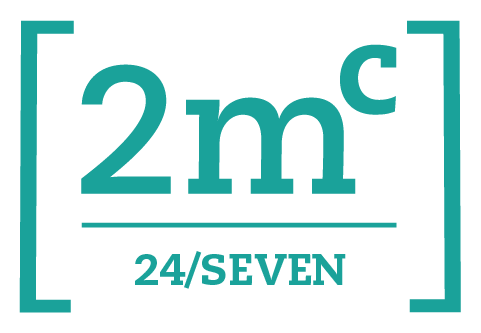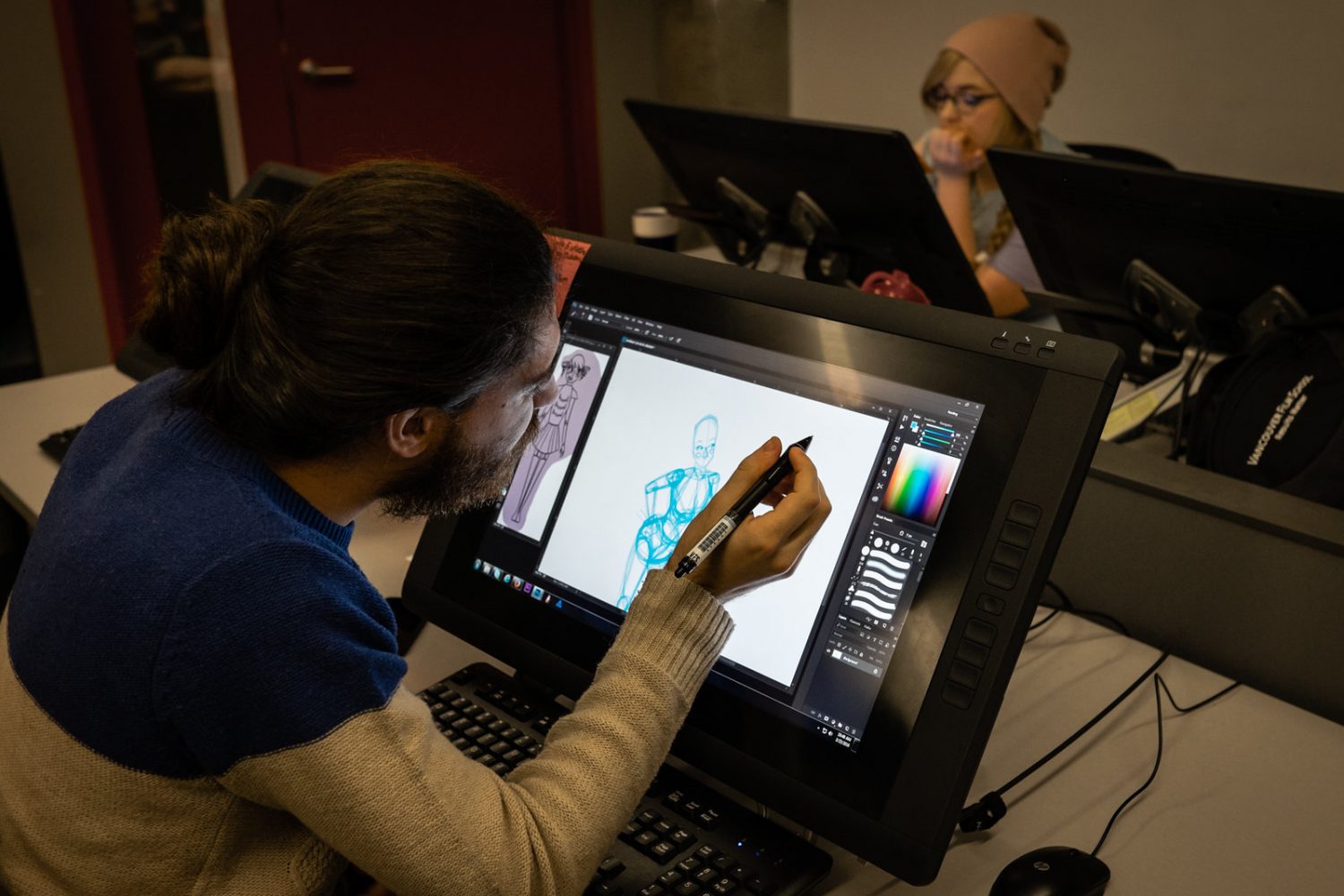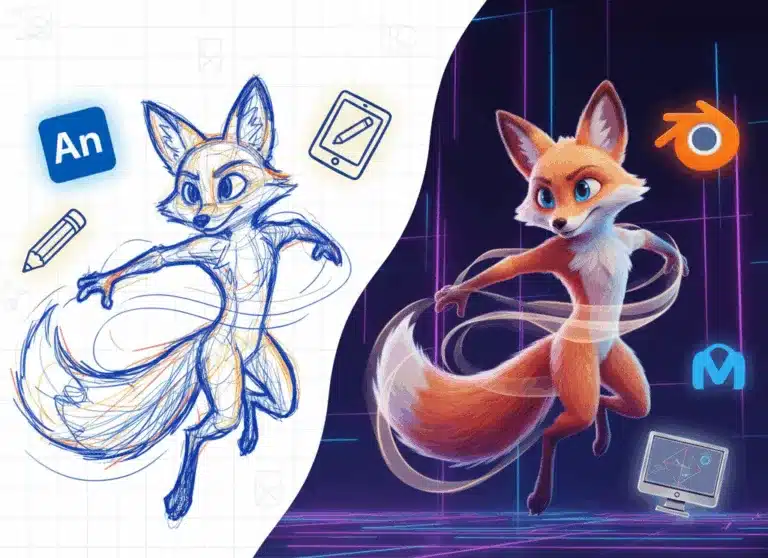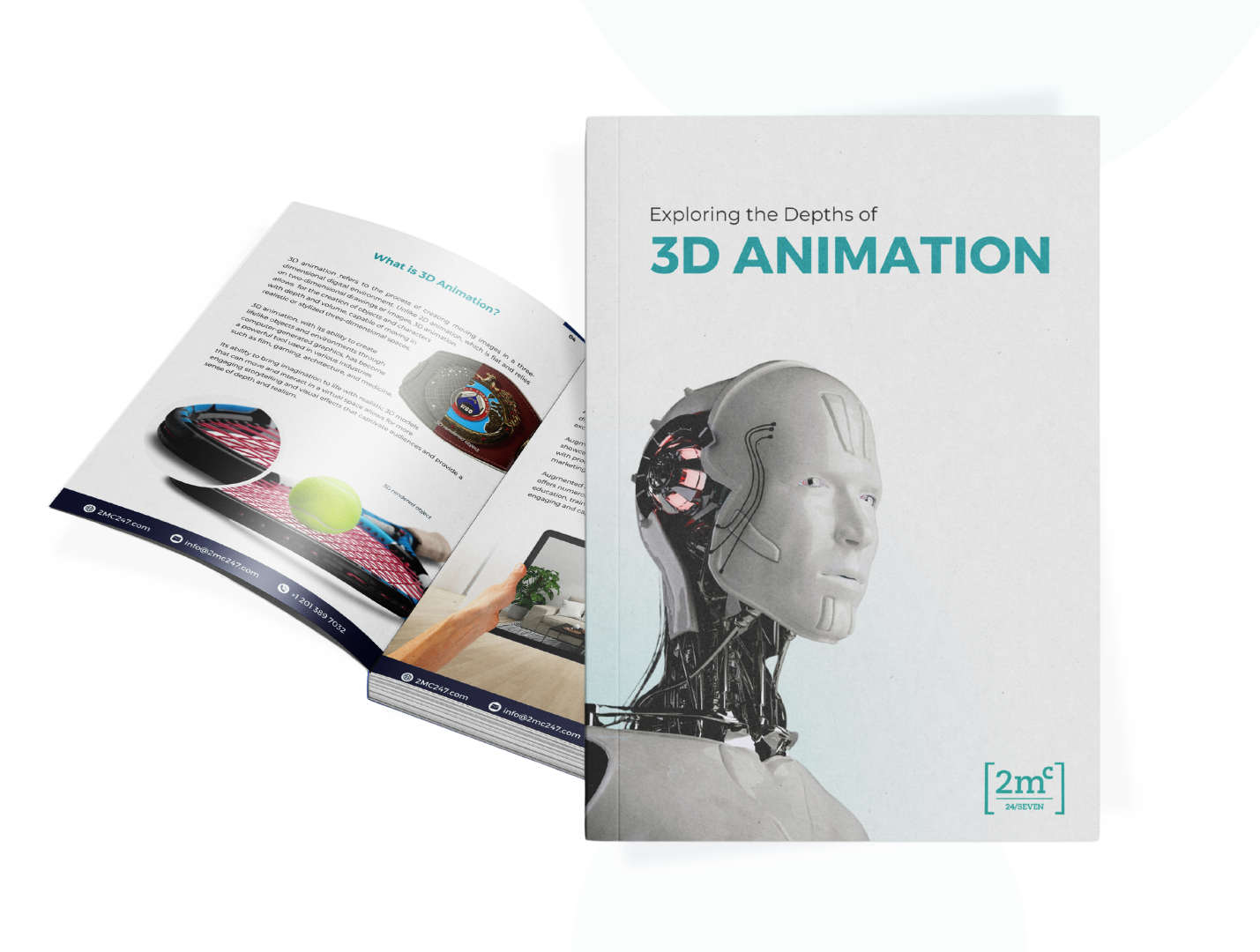3D animation has revolutionized the world of games and entertainment, seamlessly blending the boundaries between reality and digital creations.
By delving into the different types of 3D animation, from digital 3D to motion capture, stop motion to cel shading, this article aims to help you gain a deeper understanding of this dynamic art form that constantly pushes the limits of what is possible.
As our society continues to crave innovation in entertainment and visual storytelling, understanding these different types of 3D animation becomes crucial for anyone aspiring to work in this rapidly evolving industry.
Introduction to 3D Animation
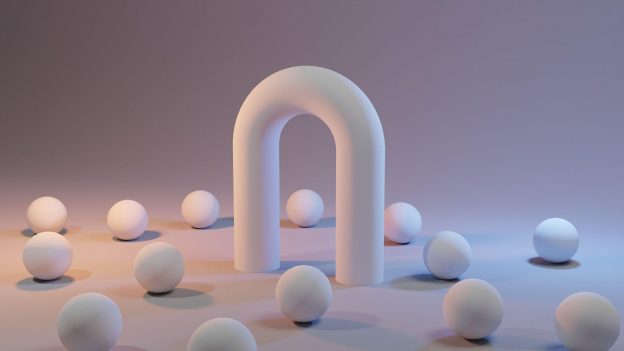
While it may seem like 3D animation is just about creating moving objects in a digitally created space, the truth is that it actually blurs the lines between animation and reality, allowing for the creation of impossible worlds and pushing the boundaries of what we perceive as real.
3D animation is a captivating and dynamic medium used in various industries, including film, video games, architecture, product design, marketing and more. It brings characters, objects, and environments to life in a three-dimensional space, allowing for depth and volume.
With 3D animation techniques animators are able to create realistic and immersive experiences that captivate audiences.
Overall, 3D animation opens up endless possibilities for creativity and innovation. It combines technical expertise with artistic vision to create visually stunning animations that push the boundaries of what is possible.
What are the Types of 3D Animation
There are several types of 3D animation, each with its own characteristics and applications. Here are some of the main types:
Digital 3D Animation/CGI
Digital 3D animation is one of the popular types of 3D animation. It involves the use of sophisticated animation software to create lifelike and highly detailed animations. This type of animation technique allows animators to manipulate virtual objects and characters in a three-dimensional space, adding depth, texture, and realism to their creations.
Digital 3D animation also encompasses various techniques such as motion graphics, which involve combining traditional graphic design with animation principles to create visually appealing and dynamic animations.
Animation software like Maya, Unity, SketchUp Pro, Mudbox, and Houdini are commonly used in digital 3D animation due to their advanced features and capabilities. These software programs provide animators with a wide range of tools for modeling, texturing, rigging, lighting, and rendering their animations.
With the advancements in technology and the increasing demand for realistic visual effects in movies and games, digital 3D animation has become an essential part of the entertainment industry.
It allows animators to create immersive worlds that were once impossible to achieve through traditional hand-drawn or stop-motion techniques.
The popularity of digital 3D animation can be seen in iconic films such as Up, Toy Story, How to Train Your Dragon, and The Lego Movie where stunning visuals bring these animated worlds to life, captivating audiences of all ages with their realistic and immersive environments.
The advancement of digital 3D animation has opened up endless possibilities for filmmakers, allowing them to create breathtaking landscapes, intricate character designs, and seamless action sequences that were previously unimaginable.
These films have pushed the boundaries of storytelling and have forever changed the landscape of animation.
Interactive 3D Animation
Interactive 3D animation allows users to actively engage and interact with virtual environments, creating a dynamic and immersive experience. This type of animation is commonly used in video games, where players can control characters and navigate through digital worlds.
Through the use of interactive animation, users have the ability to manipulate objects, solve puzzles, and make choices that directly impact the outcome of the game.
Augmented reality (AR) is another application of interactive 3D animation that overlays virtual elements onto the real world through devices such as smartphones or AR glasses. This technology enhances our perception of reality by seamlessly blending computer-generated graphics with our physical surroundings.
One important technique used in interactive 3D animation is motion animation. With this technique, characters and objects are given realistic movements based on user input or predefined algorithms.
Inverse kinematics (IK) also plays a crucial role in achieving natural-looking motions by calculating how each joint should move to reach a desired position or orientation. By using IK, animators can create lifelike interactions between characters and their environment.
Another technique employed in interactive 3D animation is skeletal animation, which involves creating a digital skeleton for characters and attaching their skin or mesh to it. This method allows for more efficient manipulation of character movements as animators can control deformation by adjusting the underlying bones’ positions and rotations.
Overall, interactive 3D animation combines cutting-edge technology with artistic creativity to provide users with an engaging and immersive experience in virtual environments.
Virtual Reality in 3D Animation

Virtual reality in 3D animation revolutionizes the way users experience digital content by immersing them in a simulated environment that feels incredibly real. This cutting-edge technology allows users to step into a virtual world and interact with it, providing a level of realism and immersion that was previously unimaginable.
Virtual reality takes advantage of specialized VR headsets to create an immersive experience where users can explore and interact with their surroundings. It offers a new level of interactivity, as users can physically move within the virtual space and manipulate objects using motion controllers.
In terms of animation techniques, virtual reality 3D opens up new possibilities for fluid simulation, which generates realistic fluids such as water, smoke, and fire.
These simulations are not only visually stunning but also add depth and realism to the virtual environment. Additionally, traditional animation styles can be adapted for virtual reality 3D, allowing animators to create captivating experiences that transport users into fantastical worlds or historical settings.
With the increasing popularity of virtual reality technology, more and more industries are exploring its potential applications beyond gaming, including education, architecture, healthcare, and training simulations. As this field continues to evolve and improve, we can expect even more exciting advancements in the types of 3D animation techniques used in virtual reality experiences.
Stop Motion
Stop motion animation is a traditional and widely recognized form of 3D animation that involves physically manipulating objects or models frame by frame to create the illusion of movement. This technique has been used for many years and continues to captivate audiences with its unique charm and tangible aesthetic.
In stop motion animation, each movement is carefully planned and executed by manipulating the objects or models in small increments between each frame. These frames are then played back at a rapid speed to create the illusion of fluid motion.
The physicality and tactile nature of stop motion animation give it a distinct feel that sets it apart from other types of 3D animation. It allows animators to bring inanimate objects to life and imbue them with personality, creating a sense of wonderment for viewers.
Stop motion animation has been used in various forms of media, including films, television shows, commercials, and even music videos. Some notable examples include classics like King Kong (1933) and The Nightmare Before Christmas (1993), and of course, Coraline (2009).
With advancements in technology, stop motion techniques have also evolved to incorporate digital enhancements such as visual effects and compositing. This blending of traditional craftsmanship with modern tools showcases the innovative spirit that drives the field of 3D animation forward.
Cel Shading (Toon Shading)
Cel Shading, also known as Toon Shading, is a captivating technique utilized in 3D animation that mimics the appearance of hand-painted comic books or cartoons, creating a visually unique and stylized aesthetic.
This technique aims to create a flat volume in real time, removing the realistic textures and details commonly associated with traditional 3D rendering. Instead, it focuses on using solid colors and smooth shading to give objects an illustrative quality.
Cel Shading can be achieved by applying a shader to the objects in the scene which calculates lighting values differently than traditional rendering techniques.
By using this method, 3D models appear as if they belong in a 2D environment, blurring the lines between animation and reality.
One of the advantages of Cel Shading is its ability to evoke emotions and convey specific moods through its distinctive visual style. It gives animators more creative freedom by allowing them to experiment with different artistic approaches and push the boundaries of reality.
This technique has been widely used in various forms of media such as video games, animated films, and commercials. For example, popular animated movies like The Legend of Zelda: Breath of The Wild and Borderlands incorporate Cel Shading to enhance their unique art styles. Additionally, Cel Shading has been utilized in marketing campaigns and branding strategies due to its eye-catching appeal.
As technology continues to advance, we can expect further exploration into new applications and variations of Cel Shading within the realm of 3D animation.
The Magic of Motion Capture
Motion capture, also known as mocap, involves recording the movements of real actors or objects and translating them into digital animation.
This technique revolutionizes 3D animation by capturing even the subtlest nuances of human movement, resulting in characters that move with lifelike fluidity. Here are some key aspects that make motion capture a magical tool in the world of animation:
Motion capture is a truly magical tool in 3D animation that enables the creation of realistic and immersive experiences. Its ability to accurately replicate human movement adds an extra layer of authenticity to animated characters while increasing efficiency in the production pipeline.
Some Popular 3D Animation Techniques
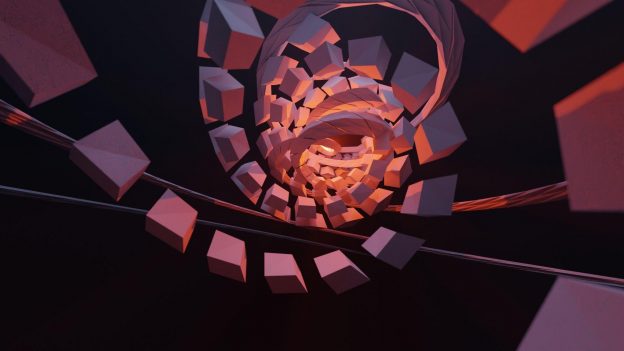
Inverse Kinematics
Inverse Kinematics simplifies the process of animating character’s limbs by controlling their movement based on the position of their end effectors.
In traditional animation, animators would have to individually animate each joint and bone in a character’s limb to achieve realistic movement. However, with Inverse Kinematics, animators can define the desired position of a character’s hand or foot, and the software will automatically calculate the positions and rotations of the intermediate joints to achieve that desired result.
This technique not only saves time and effort for animators but also allows for more natural and fluid movements.
Inverse Kinematics is widely used in 3D animation systems across various industries such as gaming, film, and advertising. It plays a crucial role in creating believable characters with lifelike movements. By using this technique, animators can create complex animations involving actions like walking, grabbing objects, or even performing acrobatic feats more efficiently.
Inverse Kinematics also enables artists to easily control deformations in characters’ limbs while maintaining overall body proportions. Overall, Inverse Kinematics is an essential tool that simplifies the animation process and contributes to creating more realistic and engaging characters in 3D animation projects.
Fluid Simulation in 3D Animation
Fluid simulation in 3D animation involves generating realistic animated fluids such as water, smoke, and fire. This technique adds a level of realism and complexity to the animation by accurately representing the behavior and movement of these fluid elements.
By using complex algorithms, 3D animators can simulate the physics behind fluid dynamics, allowing for believable interactions between different fluids and their surroundings.
To achieve realistic fluid simulation in 3D animation, animators rely on various techniques and tools. Here are three important aspects of fluid simulation:
By employing these advanced techniques for fluid simulation in 3D animation, animators have been able to create breathtaking visual effects that bring scenes to life and captivate audiences with their realism and innovation.
3D Skeletal Animation
Skeletal Animation is a revolutionary technique in the field of 3D animation that brings characters to life with realistic movements and expressions.
It involves creating a digital skeleton for a character and attaching it to a surface representation, allowing for precise control over the character’s movement.
This technique is based on the concept of inverse kinematics, which simplifies the animation process by automatically calculating the positions and orientations of all the joints in the skeleton based on desired movements.
One key advantage of Skeletal Animation is its ability to produce natural and lifelike movements.
By manipulating the position and rotation of each joint in the digital skeleton, animators can create fluid motions that mimic real human or animal actions.
This allows characters to walk, run, jump, dance, or perform any other action with remarkable realism.
Additionally, Skeletal Animation enables animators to easily manipulate different parts of a character’s body individually while maintaining overall coherence. For example, an animator can specifically control facial expressions or hand gestures without affecting other parts of the body.
The use of 3D Skeletal Animation has significantly advanced character animation in video games, movies, and other forms of media. It has become an essential tool for animators as it offers precise control over character movement and allows for more realistic performances.
With this technique at their disposal, animators can push boundaries and create innovative experiences that captivate audiences who have an underlying desire for groundbreaking advancements in animation technology.
Hair and Fur Simulation
Hair and fur simulation is a cutting-edge technique that replicates the natural movement and appearance of hair and fur in 3D animation.
This technique is widely used in various industries, including gaming, film, and advertising, to create realistic characters or creatures with lifelike hair or fur.
Hair and fur simulation involves complex algorithms that calculate the behavior of individual strands of hair or fur based on factors such as gravity, wind, collisions, and constraints.
To achieve realistic results, 3D animators use specialized software programs such as Maya or Houdini that offer advanced hair dynamics tools.
These tools allow animators to control various parameters such as length, thickness, density, curliness, clumping, and even color variations within the hair or fur.
By carefully manipulating these parameters and applying physics-based simulations, animators can create convincing animations where the hair or fur moves realistically in response to different environmental conditions.
Additionally, improvements in rendering techniques have made it possible to accurately capture light interactions with hair or fur surfaces for enhanced visual fidelity.
As a result of these advancements, audiences can now experience incredibly lifelike characters with fully animated flowing locks or furry coats that add an extra layer of depth and immersion to 3D animations.
Overall, the use of hair and fur simulation adds a level of intricacy and realism to 3D animations that would be impossible to achieve manually. By accurately replicating the natural movement and appearance of hair or fur through complex algorithms and physics-based simulations, hair and fur simulation techniques bring animated characters to life like never before.
Rigid vs Soft Body Dynamics
Rigid vs Soft Body Dynamics is a fundamental concept in 3D animation that involves the simulation of physical objects and their interactions within a digital environment. Building upon the previously discussed topic of Hair and Fur Simulation, this subtopic explores the broader scope of simulating various types of objects with different properties.
In rigid body dynamics, objects are treated as solid and unchanging entities that move and interact based on physical laws such as gravity, collision, and momentum.
This technique is commonly used to animate rigid objects like buildings, vehicles, or even simple shapes. Rigid body dynamics allows for realistic movement and collisions between objects, making it an essential tool for creating believable simulations in areas such as game development and visual effects.
On the other hand, soft body dynamics focuses on simulating deformable objects like cloth, rubbery materials, or even organic tissues. Unlike rigid bodies, these objects can bend, stretch, or deform under external forces.
By using techniques such as mass-spring systems or finite element methods, animators can create realistic simulations of cloth swaying in the wind or a character’s muscles flexing during movement. Soft body dynamics adds an extra layer of realism to animations by accounting for the complex behavior of flexible materials.
Understanding the differences between rigid and soft body dynamics enables animators to accurately simulate a wide range of materials and their interactions within virtual environments. By incorporating these techniques into their workflow, animators can bring life-like movements to both inanimate objects and organic characters alike.
Rotoscoping Animation
Rotoscoping animation, a widely used technique in the field of 3D animation, involves tracing over live-action footage frame by frame to create realistic and fluid movements. This technique was first developed by Max Fleischer in the early 1900s as a way to accurately depict complex movement in cartoons.
Rotoscoping allows animators to capture the intricacies of human motion and transfer them into their animated characters, resulting in more lifelike animations.
To create a rotoscoped animation, animators typically start with live-action footage that serves as a reference for the desired movements. They then meticulously trace over each frame of the footage, using specialized software or drawing tools.
This process requires great attention to detail and skillful hand-eye coordination. The traced frames are then compiled together to form a sequence of images that give the illusion of movement when played back at normal speed.
Rotoscoping animation offers several advantages in terms of realism and fluidity.
By using real-life references, animators can achieve highly accurate and natural-looking movements that may be challenging to replicate through traditional keyframe animation techniques.
It also allows for greater control over subtle nuances such as facial expressions and gestures, enhancing the overall believability of the animated characters. Rotoscoping has been used extensively in various forms of media, including films, video games, and commercials.
The use of rotoscoping animation showcases an innovative approach within the realm of 3D animation. By merging live-action footage with digital artistry, animators are able to bridge the gap between reality and fantasy seamlessly.
This technique opens up new possibilities for creating immersive experiences that captivate audiences’ imaginations while maintaining a sense of familiarity with real-world movements. As technology continues to advance, it is likely that rotoscoping will evolve further and find even more applications within the field of 3D animation.
Uses of 3D Animation in Business and Marketing

One of the most significant applications of 3D animation in business and marketing is its ability to create visually captivating advertisements that effectively engage and communicate with consumers.
With its realistic rendering capabilities, 3D animation has revolutionized the advertising industry by providing a platform for businesses to showcase their products or services in a visually appealing and innovative manner.
Here are four ways in which 3D animation is utilized in business and marketing:
1. Product Visualization
3D animation allows businesses to create virtual representations of their products, enabling customers to visualize them from different angles, explore various features, and understand how they work. This not only enhances the overall shopping experience but also helps potential buyers make informed decisions by providing them with a realistic understanding of the product’s functionalities. Overall it enhances the brand’s growth.
2. Branding and Logo Design
By incorporating 3D animation into branding strategies, businesses can create dynamic logos that leave a lasting impression on consumers’ minds. These animated logos add a touch of innovation and modernity to a brand’s identity, making it stand out from competitors in an increasingly crowded market.
3. Architectural Visualization
In industries such as real estate and construction, 3D animation plays a crucial role in showcasing architectural designs before they are built. It allows architects and developers to present their ideas in a visually compelling way, helping clients envision the final outcome accurately. This not only saves time but also provides clients with the confidence to invest in these projects.
4. Virtual Reality Experiences
As virtual reality (VR) technology continues to advance, businesses are leveraging 3D animation techniques to create immersive VR experiences for their customers. Whether it’s offering virtual tours of properties or allowing users to test-drive virtual versions of products before purchasing them, these interactive experiences provide an innovative way for businesses to engage with consumers on a deeper level.
The application of 3D animation in business and marketing has opened up new avenues for creativity and innovation. From visually captivating advertisements to immersive virtual reality experiences, businesses are harnessing the power of 3D animation to effectively engage and communicate with their target audience.
Uses of 3D Animation in Education
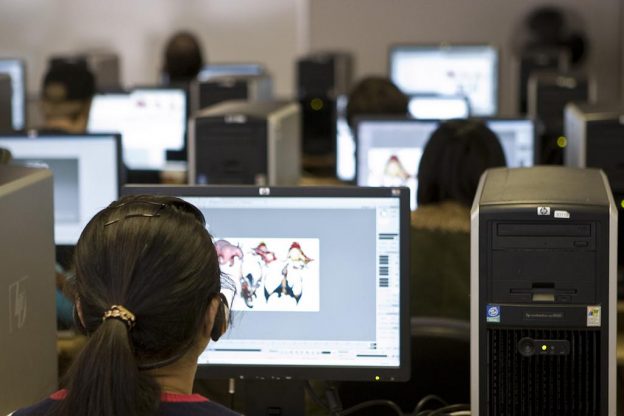
The integration of 3D animation in the field of education has provided a valuable tool for enhancing learning experiences and engaging students through visually dynamic and interactive content.
With its ability to create realistic and immersive environments, 3D animation allows educators to present complex concepts in a more accessible and comprehensible way.
Through the use of visual storytelling, students are able to visualize abstract ideas, making it easier for them to grasp difficult concepts.
Additionally, interactive 3D animations enable students to actively participate in the learning process by allowing them to manipulate objects or explore virtual spaces. Incorporating 3D animation in education also fosters creativity and critical thinking skills.
Students can be encouraged to create their own animations, which not only develops their technical skills but also promotes problem-solving abilities as they navigate the challenges of creating an animated sequence.
Moreover, 3D animation can be used as a powerful tool for simulating real-world scenarios, enabling learners to practice decision-making skills in a safe environment.
Overall, the utilization of 3D animation in education opens up new possibilities for innovative teaching methods that captivate students’ attention while promoting deeper understanding and retention of knowledge.
Other Applications of 3D Animation![]()

Another realm in which 3D animation has found its footing is in the field of architecture and design. With its ability to create virtual environments and realistic visualizations, 3D animation has become an indispensable tool for architects and designers. It allows them to showcase their ideas and concepts in a visually compelling way, helping clients better understand proposed designs before they are built.
Another application of 3D animation is in the field of medicine and healthcare. Medical professionals have increasingly turned to 3D animation to visualize complex anatomical structures and medical procedures.
By creating accurate digital representations of organs or systems within the body, doctors can better explain diagnoses or surgical interventions to patients. This visual aid helps patients grasp difficult concepts more easily while fostering trust between doctors and their patients.
Furthermore, 3D animation allows surgeons to plan intricate surgeries by virtually exploring different approaches and potential complications beforehand. This technology reduces risks during procedures while improving patient outcomes by enhancing precision.
Overall, the use of 3D animation in medicine revolutionizes healthcare education as well as patient care by providing innovative tools for visualization and understanding complex medical concepts.
What Type of 3D Animation is Right for Your Project
When deciding on the appropriate type of 3D animation for a project, it is crucial to consider the specific requirements and objectives of the project in order to determine which technique will best bring the vision to life.
Different types of 3D animation offer unique features and capabilities that can enhance different aspects of a project. For example, if the goal is to create realistic environments and effects for a film or video, 3D Video and Motion Graphics animation would be an ideal choice. This technique allows for the creation of lifelike settings and special effects that can transport viewers into a whole new world.
On the other hand, if interactivity is a key component of the project, Interactive 3D animation would be more suitable. This type of animation enables viewer-object interaction, making it perfect for games or interactive presentations where users can explore and manipulate virtual environments.
Finally, Virtual Reality 3D animation offers an immersive experience through specialized VR headsets. This technique is especially effective when creating virtual tours or simulations where users can feel like they are physically present in a digitally created space.
Ultimately, choosing the right type of 3D animation depends on understanding the goals and requirements of the project. By considering factors such as realism, interactivity, and immersion, animators can select a technique that will best bring their vision to life while captivating their audience with innovative storytelling techniques.
Conclusion![]()
In conclusion, 3D animation has revolutionized the world of entertainment and gaming, offering a level of realism and immersion that was previously unimaginable.
From digital 3D to motion capture, the different types of 3D animation techniques explored in this guide have pushed the boundaries of what is possible in creating visually stunning and captivating animations.
Whether it’s bringing characters to life in films like Toy Story or creating virtual worlds in video games like How to Train Your Dragon, 3D animation has become an integral part of our modern culture.
Moreover, the applications of 3D animation extend beyond just entertainment. In business and marketing, 3D animations can be used to create engaging advertisements and promotional materials that grab attention and leave a lasting impression on consumers. In education, 3D animations can enhance learning experiences by providing interactive visualizations that make complex concepts easier to understand.
As technology continues to advance, the possibilities for 3D animation are only limited by our imagination. As we move forward, the future holds even greater potential for the world of 3D animation.
Frequently Asked Questions
What are some commonly used software programs for creating 3D animation?
Commonly used software programs for creating 3D animation include Maya, Unity, SketchUp Pro, Mudbox, and Houdini. These programs offer a wide range of tools and features to create realistic and immersive animations for various industries such as film, gaming, and architecture.
How does 3D animation enhance the realism and depth of animated content?
3D animation enhances realism and depth by creating an illusion of moving 3D objects in a digitally created space. It adds height, width, and depth for realistic details and textures, allowing the creation of impossible worlds in movies, commercials, games, and architecture.
Can you explain the concept of inverse kinematics and its role in 3D animation?
Inverse kinematics is a technique used in 3D animation to create natural movements of characters by controlling the position and orientation of their limbs. It simplifies animation by automatically calculating joint rotations based on desired end-effectors’ positions.
What are some examples of iconic films that have utilized 3D animation?
Iconic films such as “Up,” “Toy Story,” “How to Train Your Dragon,” and “The Lego Movie” have utilized 3D animation to bring their characters and worlds to life, pushing the boundaries of creativity and storytelling.
How does virtual reality 3D animation differ from other types of 3D animation?
Virtual reality 3D animation differs from other types of 3D animation by creating a truly immersive experience through the use of specialized VR headsets. It aims to transport users into a digitally created world, providing a heightened sense of presence and realism.
